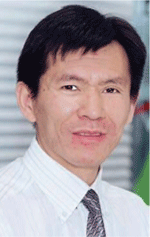The application of dynamic modelling technique on the pipeline drying operation during pre-commissioning
Diwu Chen A B , Andrew Duff A and John Willcocks AA Wood, Level 1, 240 St Georges Terrace, Perth, WA 6000, Australia.
B Corresponding author. Email: Diwu.Chen@Woodplc.com
The APPEA Journal 60(2) 606-610 https://doi.org/10.1071/AJ19144
Accepted: 24 February 2020 Published: 15 May 2020
Abstract
The objective of pipeline drying during pre-commissioning is to remove residual water left in the pipeline after dewatering and desalination operations. Removing the residual water mitigates corrosion and hydrate formation and aids quicker delivery of product to required dryness. The common pipeline drying methods are vacuum drying and convection drying. The convection drying method blows dry air through the pipeline to remove the residual water. Its disadvantages are an inability to adequately dry complex-shaped pipeline networks, significant equipment footprint and expelling air noise during the convection drying operation. The vacuum drying method can achieve low dewpoints particularly for complex-shaped pipeline networks and the equipment footprint can also be smaller than for the convection drying method. Therefore, it is advantageous when facing space restrictions for equipment. This paper introduces a dynamic integrated model to simulate the pipeline drying operation. This model considers vacuum pump performance and gas saturation condition in the pipeline during the drying operation. The modelling results can be used to determine the vacuum drying suitability, predict the drying operation duration and identify opportunities to improve the pipeline drying efficiency, such as vacuum pump performance, dry gas injection and convection dry air flow rate. It also demonstrates where vacuum drying is unlikely to be feasible, i.e. low ambient temperature conditions, and methods for identifying such. An optimisation case study is also presented. The drying duration can be reduced significantly by integrating vacuum drying with dry gas injection. This combined methodology can thus significantly improve the pipeline vacuum drying efficiency, which reduces the project cost and improves and de-risks scheduled and simultaneous operations.
Keywords: efficiency, equipment footprint, OLGA, vacuum drying, vacuum pump.

Diwu Chen works for Wood as Lead Flow Assurance Engineer. He has 15+ years of experience in major oil and gas projects involved with flow assurance and relevant project engineering areas. |

Andrew Duff works for Wood as Principal Engineer and Pre-commissioning Subject Matter Expert. He has 23 years of experience in major oil and gas projects involved with pre-commissioning, commissioning and ROV operations. |

John Willcocks works for Wood as Pipeline Manager (Australia). He has 28+ years of experience in major oil and gas projects involved with subsea pipeline design, installation and export system design. |


